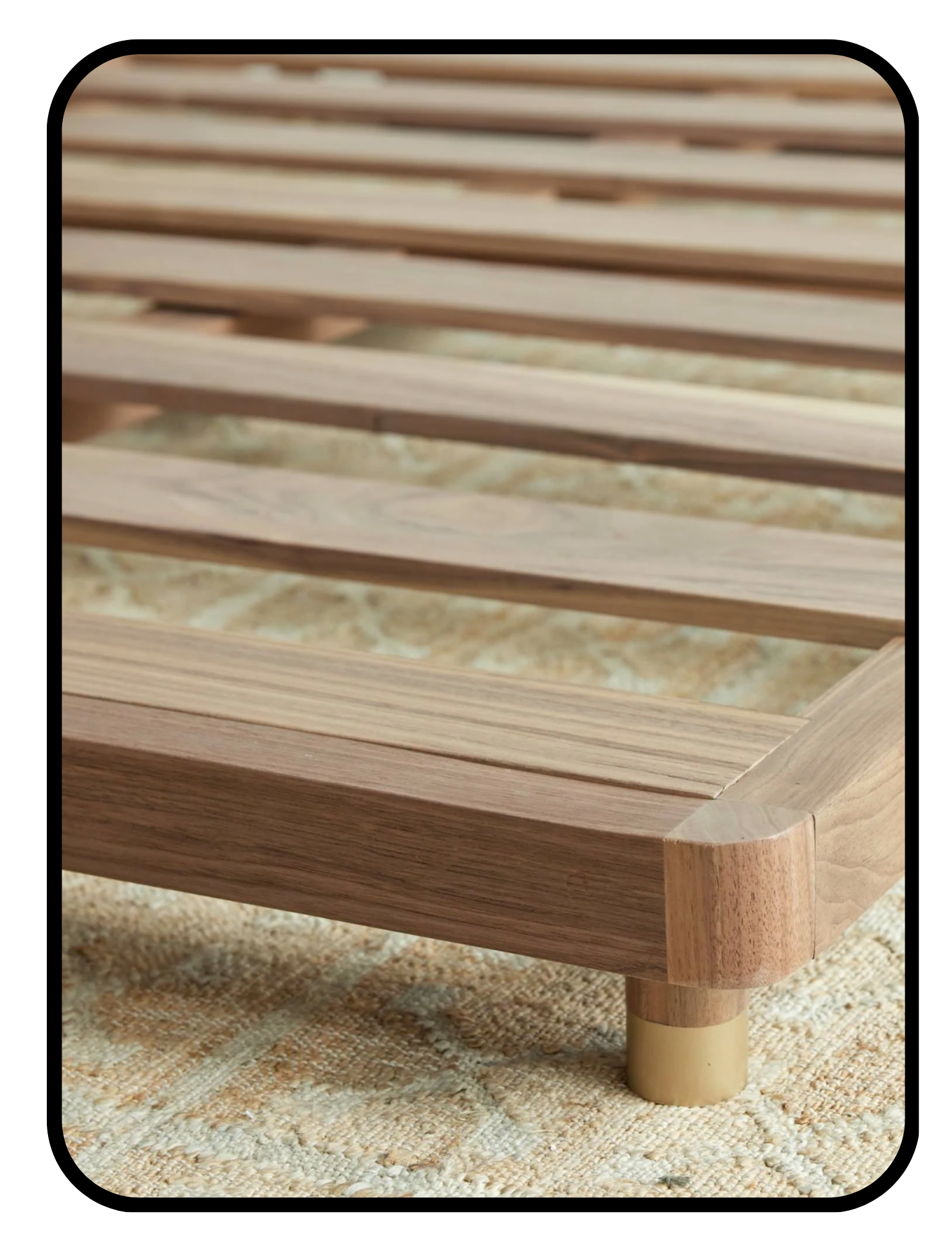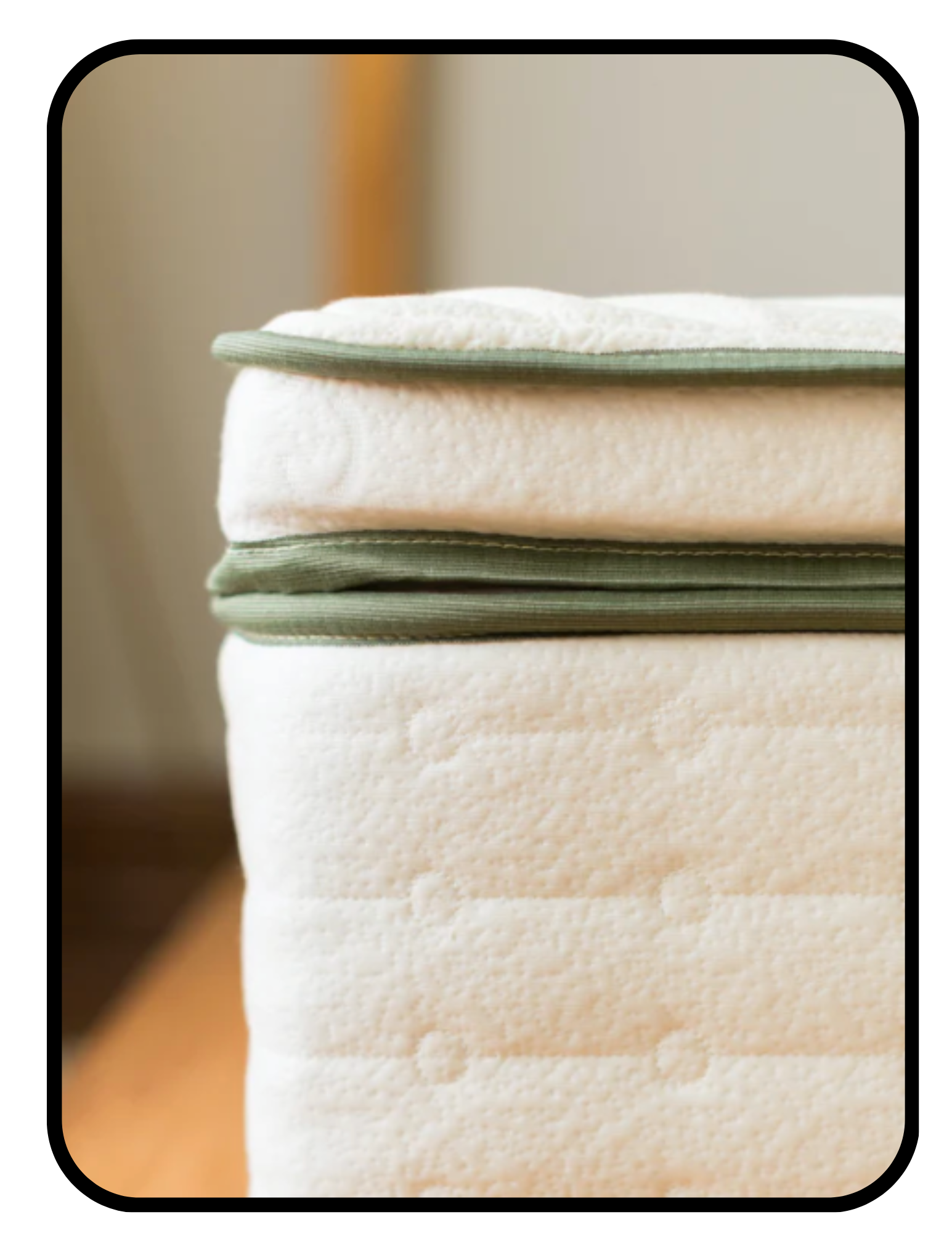Learn ➜ Material Health Guides ➜ Adhesive Guide
Adhesive Guide
By Dr. Meg Christensen | Updated June 2025
Glue holds together nearly every piece of furniture in your home: from your dining table joints to the layers of your mattress. But not all adhesives are created equal—while water-based PVA is relatively safe, solvent-based glues can off-gas harmful VOCs for weeks or months after application. This guide breaks down the spectrum from plant-based options to toxic solvent adhesives, explains why some glues smell so strong, and answers common questions like: Is wood glue toxic? How long does it take for glue to stop off-gassing? What are glue-free alternatives?
Glues
Is wood glue toxic?
It depends what kind you’re talking about. Here are examples for each rating symbol category:
Water-based glues made with natural materials: there are plant-based and bio-based glues available, though they’re less commonly used now. Cellulose glue is water mixed with wood pulp, and can be used for light hobby wood projects. Flour can be used as a glue when mixed with water, since the gluten in it acts as a binder— it’s actually used as wallpaper paste. Hide glue is water mixed with connective tissue from animal hides. It’s naturally VOC free, and was the “original glue,” used for thousands of years. It’s not commonly used on manufactured or commercial wood furniture that requires high durability, but it is an option for use at home and for lighter weight work— Titebond actually makes hide glue still.
Zero VOC water-based glue made with synthetic polymers: this is what most wood glue and furniture glue is now— basically, water mixed with polymers (plastics). The most common type is PVA, or polyvinyl acetate— this is what Elmer’s craft glue, “wood glue” or “carpenters glue” are typically made of. These options are much lower in VOCs and other toxic chemicals than solvent-based glues, described below, and are some of the least toxic types of glues even when wet. ECOS makes a wood glue that falls in this category, and glues with GreenGuard GOLD status would fall into this rating category, too.
Low VOC water-based glue made with synthetic polymers: this is the same as above, just with a few more VOCs, so you may notice minimal off-gassing.
Solvent based glue made with synthetic polymers: this is your classic, smelly adhesive. You’ll notice it in cheaper furniture (I love IKEA’s prices and of the “big” stores, they are great at pushing the envelope for material health, but they still use solvent based glue in a lot of their wood products.) It can take awhile to off-gas.
Solvent based glue made with synthetic polymers and biocides: this kind of glue is used less in furniture, but very often in wallpaper pastes. Biocides are a group of chemicals that kill organisms, so pesticides, fungicides, mildewcides, etcetera. They’re added to glues for mildew- and mold- proofing, because if you’re applying a synthetic wallpaper, it can trap moisture in the wall and promote mold growth.
What are solvents?
Solvents are chemicals that keep glues in liquid form in the tube and they are one of the main reasons that glues off-gas VOCs. They help keep substances liquidy and evenly dispersed until application. They evaporate from products as they dry, and inhalation is one of the ways we are exposed. They can also be absorbed through the skin if you come into contact with them. Luckily, with purchased furniture, you won’t come into skin contact with the glue— this would mainly be an issue if you’re building your own furniture.
Are solvent-based glues toxic?
Solvents are one of the priority chemicals to avoid because of their toxic impacts on the respiratory system, neurological health, and links to cancer. Many of these are made with polyurethane, formaldehyde, xylene, and toluene, all harmful VOCs that off-gas strongly.
Once a solvent based glue cures, is it still toxic?
Once a solvent-based glue has completely cured— this means it’s not only dry, but all the chemicals in it have completely reacted together, making it chemically inert— it is not off-gassing as much, and is much less toxic to you. It can take weeks to months for a solvent based glue to completely cure and finish off-gassing. If a furniture brand uses standard solvent-based glues, it may have finished off-gassing by the time it gets to you, or it may still be in process. Ventilating is recommended until a neighbor that comes over can’t smell it anymore (your own nose will get used to it!)
Is EVA adhesive toxic?
Generally, no. EVA adhesive is also called “hot melt adhesive” and is a mixture of EVA and other ingredients. EVA is what shower curtains are made of, and is generally inert and pretty non-toxic to people. The other ingredients can vary somewhat, but are generally low VOC resins and waxes. And, you come into contact with them very rarely (you may touch an adhesive backing once or twice ever, as in applying peel-and-stick wallpaper, for example). It’s not perfectly healthy, but pretty good, and would fall under the “water based, synthetic, zero VOC” rating.
What kinds of adhesives aren’t glue-based?
Thread, nails, screws, and even joinery are ways of connecting materials together without relying on glue at all. The glue-free options can often be the most natural and healthy choice.
About “Non Toxic” and Other Language
A quick note about how I use the terms non-toxic, chemical, and toxin:
I understand that there is no agreed-upon definition of the term non-toxic, and that everything, even water, is made of chemicals, so nothing is truly chemical-free. Likewise, I’m aware that toxin refers to a natural substance like a plant poison or venom, whereas toxicant is a more accurate term for the chemicals in products that have a negative health impact. I choose to use these words anyway because they are currently the most culturally agreed-upon, descriptive, and accessible terms that allow people to find the information they are seeking.
Some people really care about the accuracy of this terminology, so I’m letting you know!
Adhesive Rating Scale
A rating scale for adhesives and glues. A scale keeps me consistent and unbiased as I rate and rank products in the Interior Medicine shop, and hopefully it’s helpful for you, too.
More Healthy Design for You
Circadian Rhythm -Friendly Alarm Clocks
Indoor Air Quality Monitors
Learn ➜ Material Health Guides ➜ Adhesive Guide







